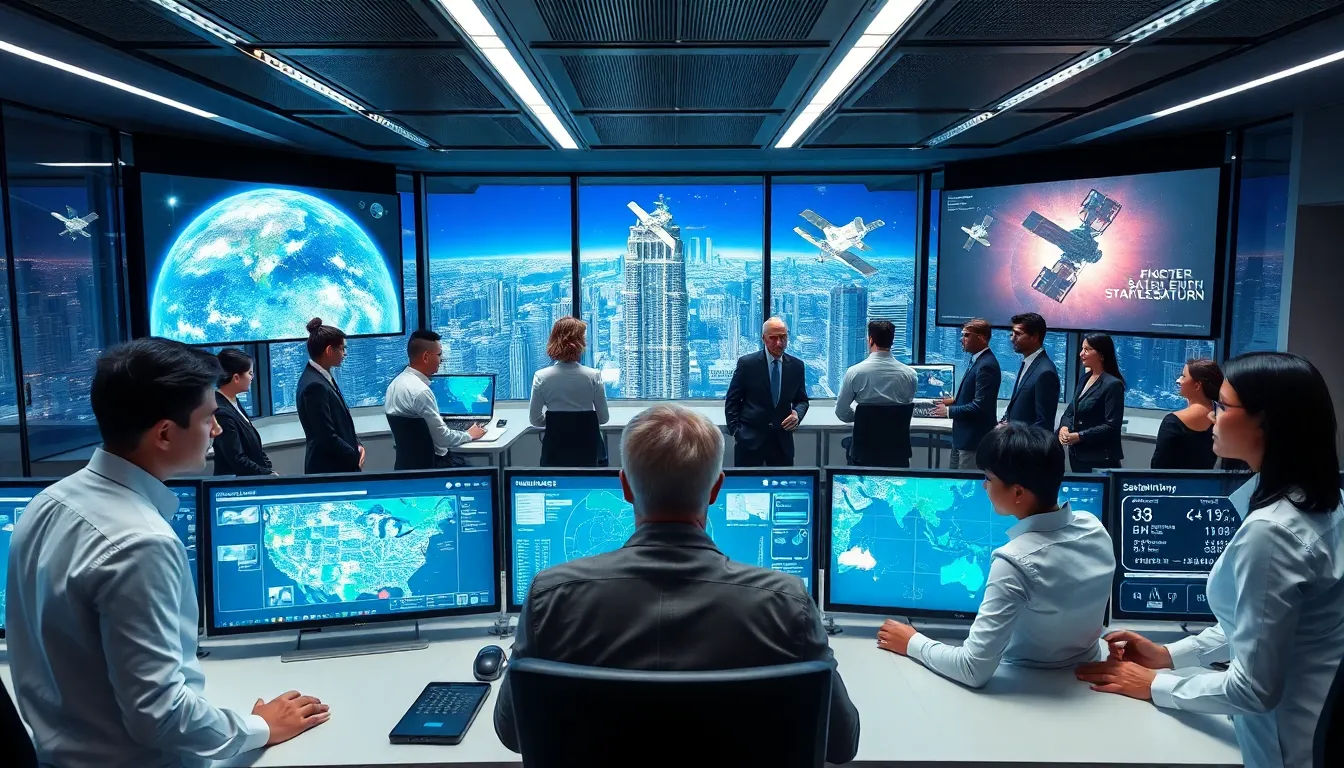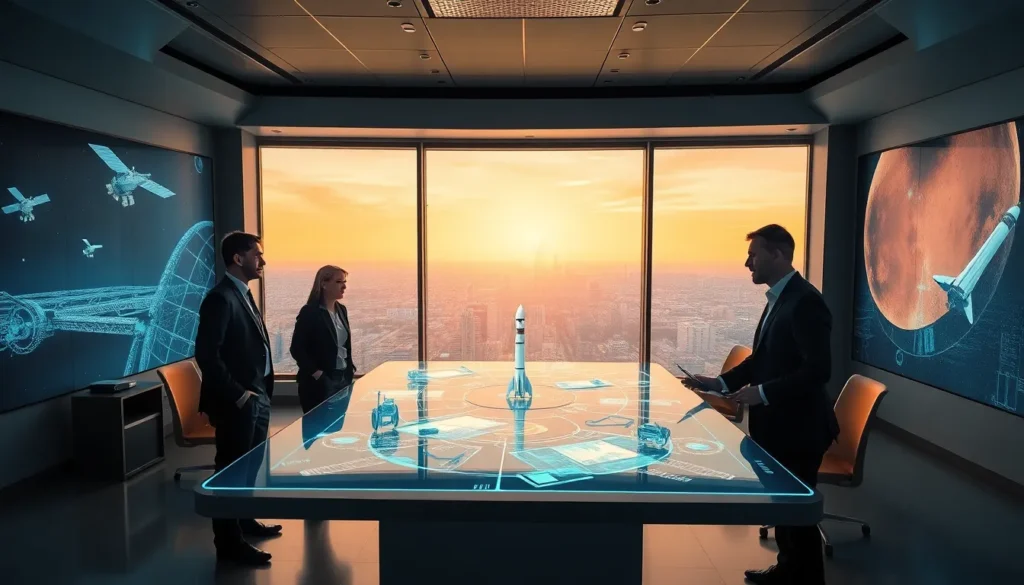In a universe that often feels too vast to comprehend, space technology exemplifies human ingenuity at its best. If you’ve ever gazed up at the stars and wondered what amazing feats mankind has achieved beyond our atmosphere, you’re in the right place. From satellites orbiting our planet like cosmic watchdogs to rockets blasting off into the infinite abyss, we’ve crafted tools that make space exploration not just a dream but a tangible reality. Buckle up, because we’re about to embark on an interstellar journey through some awe-inspiring examples of space technology. Spoiler alert: It might just be more interesting than the latest blockbuster.
Table of Contents
ToggleSatellites and Their Applications

Satellites have transformed our understanding of Earth and outer space. These remarkable devices orbit the planet, providing data crucial for various applications, including weather forecasting, global communication, and scientific research. Their role in modern society cannot be overstated.
Types of Satellites
There are several categories of satellites, each designed for specific purposes. Geostationary satellites stay fixed above a particular location, making them ideal for communication. Low Earth Orbit (LEO) satellites, on the other hand, are closer to the ground and often used for Earth observation and scientific missions. Then there are polar satellites, which pass over the poles, allowing them to cover the entire planet as Earth rotates beneath them.
Communication and Weather Satellites
Communication satellites enable global telecommunication, including phone calls and internet access. They play a vital role in broadcasting television signals, connecting people across continents. Weather satellites, such as the GOES series, monitor climate conditions and predict severe weather events, which can save countless lives.
Scientific Research and Surveillance Satellites
Scientific satellites, such as Hubble Space Telescope, have revolutionized our understanding of the cosmos, capturing stunning imagery of distant galaxies and phenomena. Surveillance satellites, like those used in national defense, provide critical data for security and intelligence purposes, helping nations keep watch over vast areas of land and sea.
Rockets and Launch Vehicles
Rockets are the powerhouse behind every space mission. These launch vehicles propel satellites and astronauts beyond Earth’s atmosphere. The evolution of rocket technology has been remarkable, paving the way for deeper exploration of space.
Launch Vehicle Examples
Take the SpaceX Falcon 9 as a prime example. This reusable rocket has not only reduced the cost of getting payloads to orbit but also demonstrated the feasibility of recycling major components of launch vehicles. Another classic is the United Launch Alliance’s Atlas V, known for its reliability in deploying satellites for various national agencies.
Reusable Rockets and Their Impact
The advent of reusable rockets marks a significant milestone in space technology. They transform the economics of space travel by allowing components to be refurbished and flown again, shifting the paradigm from one-off missions to sustainable space exploration. This innovation has sparked a new era for commercial space companies, dramatically increasing accessibility to low Earth orbit.
Space Probes and Rovers
Space probes and rovers extend our reach into the cosmos, venturing where humans cannot physically go. They serve as our eyes and ears, gathering invaluable data that enrich our understanding of celestial bodies.
Notable Space Probes
Among the notable space probes are Voyager 1 and 2, launched in 1977, which have provided mankind with stunning images and data about our solar system and are now traveling through interstellar space. The New Horizons probe recently zoomed past Pluto, capturing breathtaking photos and offering insights into dwarf planets that had remained enigmatic for centuries.
Mars Rovers and Their Discoveries
Mars rovers, like the Curiosity and Perseverance, have been game-changers. They’ve uncovered evidence of past water flow, collected rock samples, and even sent back recordings of Martian wind, displaying our quest for knowledge in action. The discoveries made by these rovers are pivotal in assessing the planet’s habitability, leading us one step closer to answering the age-old question: Are we alone in the universe?
International Space Station (ISS)
The International Space Station stands as a symbol of international collaboration and scientific advancement. It orbits Earth, serving as a laboratory, observatory, and factory all in one.
Purpose and Importance of the ISS
The ISS facilitates research that benefits life on Earth. Scientists conduct experiments in microgravity, exploring various fields, including biology, human biology, and materials science. This research has potential applications in medicine, environmental science, and technology.
Technological Innovations from the ISS
Plus to research, the ISS fosters technological innovation. Technologies developed for the ISS have led to improvements in various sectors, from water purification systems to advancements in telecommunications. This ongoing investment not only propels our knowledge of space but also offers solutions to challenges we face down here on Earth.
Emerging Technologies in Space Exploration
As we gaze into the future, emerging technologies promise to reshape space exploration as we know it. These breakthroughs are expected to enhance both our exploratory capabilities and the benefits we derive from space endeavors.
Artificial Intelligence in Space Missions
Artificial Intelligence (AI) is making waves in space missions. From autonomous navigation systems in rovers to data analysis on satellites, AI streamlines operations and allows for real-time decision-making. Projects leveraging AI can enhance the efficiency and effectiveness of exploratory missions, eventually driving more significant discoveries with fewer resources.
Satellite Internet and Connectivity Solutions
Satellite internet is another revolutionary development on the horizon. Companies like Starlink are working towards providing global broadband coverage via satellite networks. This connectivity potential can enhance internet access in remote regions, thereby contributing to global education and economic growth. The integration of such technologies signifies a massive leap for telecommunications and bridging digital divides across the planet.




